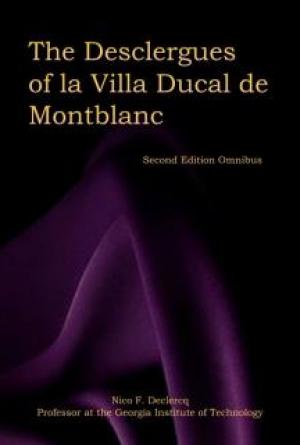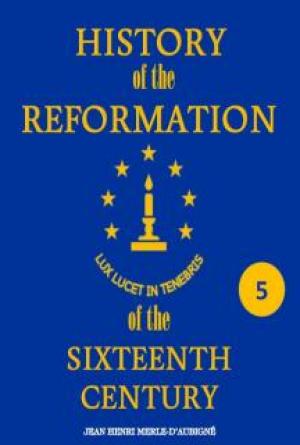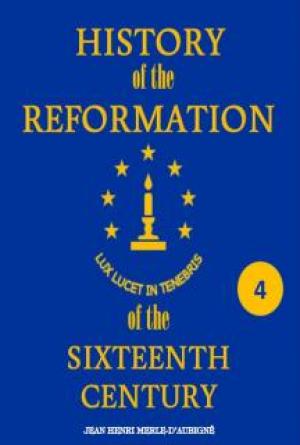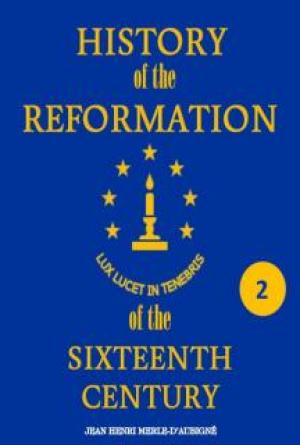FOOTNOTES:
1 Of one of the most noble houses in Picardy.
Matthew II. lord de Roye and d’Aunoy, grand master of the cross-bows, mentioned by Froissart, had issue,
1. John III. lord of Roye, &c.
2. Guy, archbishop of Rheims.
3. Matthew Tristan, lord of Busancy, &c.
4. John Saudran de Cangy.
5. Drogo, counsellor and chamberlain, grand master of waters and forests in Languedoc, killed at Nicopolis.
6. Raoul, abbot of Corbie.
7. Reginald, who went to Hungary with his brother Drogo.
8. Beatrix-John de Châtillon, vidame of the Laonnois.
2 Probably a mistake for Guichard.
3 ‘Bachines.’ Q. Is not this rather lances? the more usual term.
4 Before called Pieruels: rightly Parwis.
5 John III. de Vergy, lord of Champlite, seneschal, mareschal, and governor, of Burgundy.
6 Salmes. Q. Salines?
7 This battle was fought on the plains of Eichtfeld, near Tongres.
8 The lord d’Agimont, son to the lord of Rochefort, and the lord de Saraing, according to Placentius.
9 There seems to have been some pretext, on the score of retaliation, for the commission of these barbarities, the insurgents, during the time of their power, having exercised many similar enormities against those of the government faction.
10 John, third son of Louis I. and brother of Louis II. de Châlons, counts of Auxerre.
11 Mentioned in p. 23.
12 Amblard I. lord of La Baûme, had issue, Peter, Perceval, John, William, and Louis. John was a monk at Ambronnai; but Perceval, who continued the line, had issue, Amblard II. and William, surnamed Morelet, who was grand butler of Burgundy in 1430. Perhaps he is the great lord here meant.
13 Mentioned in vol. i. p. 135.
14 John III. lord of Crequy and Canaples, is mentioned by Froissart. He had issue, John IV. lord of Crequy, &c. Reginald, killed at Agincourt, and others.
15 Escoquehen. Q. Stocheim?
16 Heusden,—a town between Gorcum and Bois-le-Duc.
17 Oliver count of Penthievre, mentioned before.
18 Frederic, or Ferry, count of Vaudemont.
19 Catherine of Lancaster, wife of Henry III. and mother of John II. kings of Castile. I do not find a queen of Portugal in the catalogue of her children; but this event seems to be here strangely misplaced. Turquet says, ‘L’an suyvant, 1418, décéda la royne D. Catherine, aagèe de cinquante ans, de mort soudaine, et fût enterrèe à Tolede, en la chapelle des roys derniers.’
20 Brooke calls him John. He married Philippa, daughter to king Henry of England by Eleanora his second wife.
Eric X. king of Denmark, &c. son of Wratislaus duke of Pomerania by Mary of Mecklenburg, niece to Margaret, the Semiramis of the north. His great aunt, Margaret, was still alive.
21 See before, vol. i. p. 57.
22 Margaret of Bavaria, sister to the emperor Robert, married Charles the bold, duke of Lorraine.
23 Margaret, heiress of Vaudemont, married Frederick, brother of Charles duke of Lorraine.
24 Q. Who was this?
25 John le Maingre, second of the name, count of Beaufort and viscount of Turenne. He was the son of mareschal Boucicaut the elder, mentioned by Froissart, who died in 1371. He was himself made a mareschal of France in 1391, having been knighted, nine years before, at the battle of Rosebec in Flanders. He went into Hungary and was present at the battle of Nicopolis, and made prisoner with John count of Nevers. He was again appointed to the relief of the emperor of Constantinople in 1399. In 1401, he was made governor of Genoa,—and he took the city of Famagousta in Cyprus for the Genoese. He was made prisoner at Agincourt, and died in England 1421. He was a poet as well as warrior, and composed many rondeaux and virelays. In his epitaph, he is called Constable to the emperor of Constantinople.
26 See Shepherd’s Life of Poggio, p. 42.
27 Robert Hallam, cardinal, and chancellor of the university of Oxford.
28 Brandac. Q. Brunswic?
29 Marquis of Brandenbourg and Moravia. See vol i. p. 63.
30 Ladislaus, or Lancelot, son of Charles of Durazzo, and brother to Joan II. who succeeded to the crown of Naples on his death in 1412.
He took up arms on behalf of Gregory, and invaded the florentine territories in the year 1409, at the head of a large body of forces. The proceedings of the council were in fact detrimental to him, as by its decree he was deposed, and the neapolitan crown vested in his competitor, the duke of Anjou. He had also seized many towns in the patrimony of St Peter, and among the rest on Rome itself.—See Poggio Hist. Florent. p. 178. et seq.
31 Flisque. Q. Fiesco?
32 Elizabeth, daughter of John duke of Luxembourg, brother of Wenceslaus king of Bohemia, and ci-devant emperor. See vol. i. p. 63.
33 John lord of Puisaye, fifth son to the duke of Bar.
34 Bona, third daughter of the duke of Bar, married to Waleran count of St Pol.
35 Charles de Montagu, to whom the confiscated honours of the vidame du Laonnois and lord of Marcoussy were restored after the death of his father. There was no issue of this marriage with Catherine d’Albret.
36 Margaret de Clisson, widow of John de Blois and mother of Oliver, counts of Penthievre.
37 John Maria and Philip Maria, sons of John Galeas, and successively dukes of Milan.
38 Theodore Palæologus, second marquis of Montferrat. He married, first, a daughter of the duke of Bar, and, secondly, a princess of the house of Savoy. His daughter Sophia was married to Philip Maria Visconti, then count of Pavia, afterwards duke of Milan.
39 Facino Cane, a captain of great reputation, and partisan of John Maria Visconti, duke of Milan.
40 Gaing. Q. Gavi?
41 Noefville. Q. Novara, or Novi?
42 Q. Louis king of Sicily? or Charles king of Navarre? Probably the latter.
43 John VI. count of Roucy and Braine, son of Hugh count de Roucy and Blanche of Coucy. He married Isabel de Montagu, and was killed at Agincourt.
44 The lords of Antoing and princes of Espinoy were a younger branch of the house of Melun, counts of Tancarville. John I. viscount of Melun, was grandfather both to the count of Tancarville and the lord d’Antoing, mentioned in this volume.
45 Guichard Dauphin, descended from the old counts de Clermont, dauphins of Auvergne, grand master from 1409 to 1413. He was son to Guichard Dauphin I. grand master of the cross-bows.
46 Amadeus VIII. the first duke of Savoy, son of Amadeus VII. and Bona daughter to the duke of Berry.
47 Bernard VII. brother of John III. count of Armagnac, killed at Alexandria della Paglia, as related by Froissart. This count was a man of the most unbounded ambition, and had already, in the forcible seizure of the county of Fesenzaguet, (the appanage of a younger branch of Armagnac) and the murder of its count, Geraud III. and his two sons, discovered an unprincipled cruelty of disposition, remarkable even at this calamitous period of history. He married Bona of Berry, the widow of Amadeus VII. and mother of Amadeus VIII. above mentioned.
48 Martin king of Sicily, by whose death without issue the king of Arragon was deprived of male heirs. The island of Sardinia was at this time divided between the genoese and arragonian factions. The chief of the former was Brancaleon d’Oria, whose sister was married to William count of Narbonne. Turquet calls him Aimery,—and says that the king of Sicily was not killed, but died a natural death at Cagliari, after obtaining a victory over the confederates.
49 Q. Angennes? John d’Angennes, lord de la Louppe, was governor of Dauphinè and afterwards of the Louvre, and enjoyed great credit at court.
50 This Yvain Graindos is a strange corruption, if any corruption in the french nomenclature can be strange to a practised ear, of Owen Glendower, who, as Rapin says, ‘upon the Welch unanimously renouncing their allegiance to the crown of England, and acknowledging him for sovereign, from thenceforward always styled himself Prince of Wales, as appears from several acts.’
51 In a battle fought May 14. 1405. See Rapin’s History of England in loco.
52 De Dolhaing. Q. D’Olhaing?
53 I suppose Monstrelet must mean Jagellon, grand duke of Lithuania, who was called to the throne of Poland in 1386, on condition that he would become a Christian, marry the daughter of the late king, and annex Lithuania to Poland. This last condition, however, was not completely fulfilled until the reign of Sigismond Augustus in 1569.
Baudran.
Jagellon took the name of Uladislaus V. on his baptism; but Hedwige, daughter to the king of Poland, reigned two years before she married Uladislaus.
Anderson.
54 Sigismond was king of Hungary in 1387,—roman emperor 1411,—king of Bohemia 1419,—died 1437, aged 70. He married for his second wife Barbara, daughter to Hermannus II. count of Cilly in Crain.
Anderson.
55 Of the half blood. See p. 138.
56 I. e. Bari.
57 Probably Nicholas d’Este, connected by marriage with the house of Malatesta.
58 Probably Pandulph Malatesta, lord of Rimini, a captain of great reputation and adherent of king Ladislaus.
59 Sir Raoul de Gaucourt, successively promoted to the posts of chamberlain, governor of Dauphinè, and grand master of the household, became a distinguished actor in the wars with the English, from 1427 to 1437 particularly.
There was also a sir Eustace de Gaucourt, lord of Vicy, who was grand falconer in 1406 and 1412.
60 Count de Hembe. Q.
61 Charles de Mouroufle. Q.
62 The author of ‘An Account of Livonia, with a Relation of the Rise, Progress and Decay of the Marian Teutonic Order,’ London, 1701, relates these transactions in the manner following:
‘The order was now on the highest pinnacle of prosperity and honour, exceeding great kings and potentates of Europe in extent of dominions, power and riches, when Ulricus à Jungingen was chosen great master; but he being of a boisterous, fiery temper, soon broke the peace concluded between Poland with his brother Conradus à Jungingen, whereupon king Uladislaus Jagellon joining forces with his father Witoldas of Lithuania, formed an army of 150,000 fighting men and marched into Prussia. To stop the progress of this formidable army, the great master drew up as many forces as he could, and, after the Livonians had joined him, found his army consisted, in a general muster, of 83,000 well armed stout combatants; and thus, with an undaunted spirit, he marched forth to meet his enemy. Such a battle as this was never heard of before in these parts, and was given the 15th day of July 1410 in Prussia, near the town Gilgenbourg, between the two villages Tannenberg and Grunwald, on a large plain, with such obstinacy that, according to an exact computation, there were actually killed, on both sides, 100,000 on the spot. The Poles got the victory, but lost 60,000 men. The order lost 40,000,—but among them almost all their generals and commanders. The great master himself, and the chief of the order, with 600 noble german marian knights, were there slain. There is still kept every year a day of devotion upon that plain, in a chapel built to the remembrance of this battle, marked with the date of the year it happened, and this inscription, Centum mille occisi. The king of Poland was so weakened by this dear-bought victory that he very readily agreed to a peace. This memorable battle is called The Battle of Tannenberg.’
63 Moreri says, that the good duke Louis died at Monbucan on the 19th of August 1410. By his wife Anne, dauphiness of Auvergne and countess of Forez, he left John count of Clermont, his son and successor: his other children, Louis and two daughters, died without issue and unmarried. He left also a natural son, named Hector, who was killed at the siege of Soissons in 1414.
64 Boulogne, the property of the duke of Berry, by marriage with Jane, heiress of Auvergne and Boulogne.
The county of Estampes belonged to the duke of Berry,
Valois, I believe, to the count d’Alençon,
Beaumont to the duke of Orleans,—and
Clermont to the duke of Bourbon.
65 Vinchestre, or rather Winchester,—now called Bicêtre, was a palace built by a bishop of Winchester 1290. For further particulars, see ‘Sauval Antiquitès de Paris’, vol. ii. book vii.
66 I hardly know whether this can be the celebrated archbishop of Rheims, and historian of the reign of Charles VI. who was one of the most learned men of his time, and died at an advanced age, in 1474. He had two brothers older than himself, William des Ursins, baron of Treynel, chancellor of France in 1445, and again in 1464,—and James Juvenal des Ursins, who was archbishop of Rheims before him. The history written by Juvenal des Ursins occupies the space from 1380 to 1422, and throws great light, by comparison, on Froissart and Monstrelet.
67 Q. De Nesle?
Guy III. de Nesle, lord of Offemont and Mello, was grand master of the household to queen Isabella, and was killed at Agincourt. His two sons, John III. and Guy IV. followed him in succession. He had a third son, who died with him at Agincourt.
68 Monstrelet apparently mistakes. According to Moreri, Robert duke of Bar died this year, leaving issue by his wife Mary (daughter to John king of France),
1. Henry lord d’Ossy, who died in Hungary, 1396, leaving by his wife Mary de Coucy, countess of Soissons, one son, Robert count of Marle and Soissons, killed at Agincourt.
2. Philip, died in Hungary 1396.
3. Edward III. marquis du Pont, and duke of Bar after his father’s death.
4. Louis cardinal of Bar.
5. Charles lord of Nogent.
6. John lord of Puisaye. (Both Edward and John were killed at Agincourt.)
7. Yoland, queen of Arragon.
8. Mary, countess of Namur.
9. Bona, countess of St Pol.
One striking peculiarity is discernible in this table, viz. the preference shown in the succession to Edward the third son, over Robert, son of the eldest son of the deceased duke; but this was according to the law of many feudal tenures, which took no notice of our universally-established doctrine of representation in descents. The same law prevailed in Artois, and was the ground of that famous decision by which Robert d’Artois was ejected in the middle of the fourteenth century, and in consequence of which he retired in disgust to the court of our Edward III. who asserted the justice of his pretensions.
69 He was a peer as duke of Burgundy, and again a peer as count-palatine of Burgundy.
70 John, called count de Ligny, third son of John count of Brienne, brother to the count de St Pol.
71 James de Châtillon was appointed admiral in 1408, in the room of Clugnet de Breban. He was lord of Dampierre, and son of Hugh de Châtillon, formerly master of the cross-bows.
72 Nephew of duke Edward. See p. 232.
73 The advice which, according to Stowe, king Henry gave to the duke of Burgundy on this occasion was deserving of more attention than he was disposed to pay to it. ‘The duke of Burgoyne, desiring the king’s aid against the duke of Orliance, promised many things,—amongst the which he promised his daughter in marriage to the prince, and a great sum of gold with her. To whom the king answered: ‘We advertise you not to fight with your enemie in this case, who justly seemeth to vexe you, for the death of his father by you procured, but as much as in you lyeth endeavor yourself to mitigate the young man’s wrath, and promise to make him reasonable satisfaction, according to the advice of your friends; and if then he will not cease from persecuting you, get you into the strongest place of your dominion, and there gather such power as may be able to put off his force. If then, after this, he will make war against you, you shall have the juster occasion to fight with him,—and in such case we will shew you such favour as yee have demaunded.’ Thus there were sent over to his ayde Thomas earl of Arundell, Gilbert Umfreville earl of Angus, or earl of Kyme, sir Robert Umfreville, sir John Oldcastle, lord Cobham, sir John Grey and William Porter, with twelve hundred archers,’ &c. &c.
74 According to the catalogue in Moreri, Arnauld de Corbie, lord of Joigny, was at this time chancellor.
75 Called William Porter by Stowe.
76 Q. If this is not Umfreville earl of Angus and Kyme (as Stowe calls him)? There was at this period no Neville earl of Kent. The only earl of Kent of that family was William Nevil lord Falconbridge, created 1461. I find this conjecture somewhat confirmed by the original, which is, ‘Ousieville comte de Kam.’ It is true, that Holinshed mentions the earls of Pembroke and of Kent as being of the expedition: but he cites Monstrelet as his authority, and is therefore likely to be mistaken.
77 ‘Que à peu près elle ne mourast de deuil.’ ‘That she was within a little of dying with grief.’ Mary of Berry, daughter of John duke of Berry, and wife to John duke of Bourbon (her third husband, she having been before twice a widow, first of Louis de Châtillon count of Dunois, and, secondly, of the constable d’Eu), lived till the year 1434, when she died at Lyons. See Morery. Her children by the duke of Bourbon were Charles, duke of Bourbon after his father,—Louis, who died young,—and another Louis, founder of the line of Montpensier.
78 John II. lord of Rieux and Rochefort. According to Morery’s catalogue, two mareschals were created this year,—Louis lord of Loigny, and James lord of Heilly, commonly called Mareschal of Acquitaine.
79 See p. 328.







